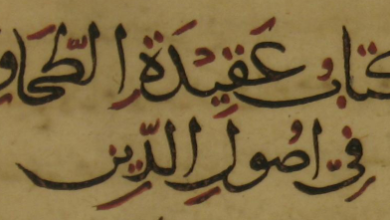Are the Ash’aris the majority of the Ummah historically?
Q. Are the Ash’aris who are linked to the creed of Ahlus Sunna wal Jama’a as expounded by Imam Abul Hasan al-Ash’ari (d. 324 AH) the majority of the Ummah historically?
Answer:
The Ash’aris were always dominant and not a minority as claimed by the orientalist George Makdisi (d. 2002), and his futile opinion was spread by some anti-Ash’aris in our time. Here is an answer to Makdisi by a former Professor of Arabic at Oxford University by the name of Wilfred Madelung (b. 1930), who said in his “The Spread of Maturidism” (p. 110):
“Considering the Islamic world as a whole, it is evident that Ash’arism spread rapidly and was firmly established before the end of the Seljuq age. In all of the east the widespread Hanbalite and other traditionist groups after the time of the geographer al-Maqdisi (writing about 378/988) were gradually absorbed by Shafi’ism. Abul Yusr al Bazdawi (usul al-din, ed. H. Linss, p. 242), writing before the year 486/1093, can state that the mass (‘amma) of the Shafi’ites were Ash’arites, evidently in regard to the situation in Transoxania and Khurasan. The Shi’ite Abd al-Jalil al-Razi writing about 565/1170, refers to the Shafi’ite mosque in al-Rayy as that of the Ash’arites (K. al-Naqd, ed. Jalal al-din Husayni Urmawi, p. 598).
In Egypt the Shafi’ite Ayyubid Salah al-Din at the time of the restoration of Sunnism in the late Seljuq age propagated an Ash’arite creed as the official doctrine of orthodoxy. Since that time, al-Maqrizi (d. 845 AH) states nearly three centuries later, anyone differing from al-Ash’ari in Egypt would be accused of infedility (cf. al-Maqrizi, al-Khitat, 2, 273, 358).
In the far west, the Almohad (Muwahhidun) movement with its militant espousal of Ash’arite Kalam, though of its own brand, swept the Maghrib and Spain in the middle of the 6th/12th century (cf. Madelung, Der Imam al-Qasim b. Ibrahim, p. 213 with n. 407). In the light of these developments, Makdisi’s far reaching conclusion that Ash’arism was regarded by the majority of the Shafi’ites ‘as a parasite’ and was rejected by Sunnite consensus (SI, XVIII, 37) is untenable.
Even as far as Baghdad and Damascus are concerned, the picture drawn by Makdisi of Ash’arism trying to infiltrate the ranks of the Shafi’ites and ultimately being rejected, does hardly justice to the situation. The very frequency with which Ibn al-Jawzi mentions clashes between Ash’arites and their opponents in Baghdad throughout the Seljuq age indicates the attractiveness and spread of Ash’arism. In Damascus Ash’arism was broadly established at least since the time of ibn Asakir (d. 571 AH), despite the prominence of some of its opponents, who, moreover, had to be rather cautious in their criticism of al-Ash’ari in order to avoid trouble with the Mamluk government generally favouring Ash’arism.” End of quote
If anyone reads al-Khitat of al-Maqrizi one can also see him admitting the dominance of the Ash’aris for well over 400 years, that is from 380 AH onwards it moved from Iraq to Syria and then to other Muslim lands, and al-Maqrizi died in 845 AH. This state of dominance continued and is still the case in our time. One only needs to list all of the famous Islamic institutes of knowledge to see where the global Sunni scholarship is linked to in terms of Sunni-creedal affiliation for well over 1000 years.






